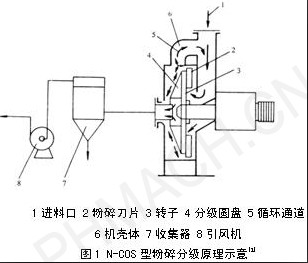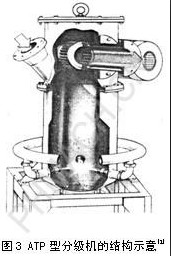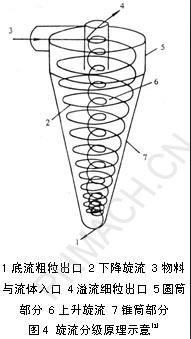Graphical grading problem in pharmaceutical smash
The ordinary powder can be classified by sieving method. At present, the pore size of the zui fine screen is only about 20 μm (600 mesh). Considering the clogging problem of the screening process, the actual screening of more than 325 mesh has no industrial significance [1]. In order to meet people's requirements for crushing particle size, especially the pharmaceutical industry has further requirements for powder particle size. As a result, more grading techniques have entered the crushing city.
According to the type of equipment used, it can be divided into: dry mechanical classification (such as impeller type, turbine type), cyclone type classification, dish type classification, horizontal spiral classification, electrostatic field classification, supercritical classification, and the like. The following is a summary of the two commonly used zui.
1, a dry mechanical classifying <br> <br> grading machine are generally dry to dry air as a medium. The starting point is to improve the classification efficiency and reduce the classification particle size by various mechanical means. Usually, various mechanical motion devices are introduced into the classification equipment at various levels to increase the centrifugal force of the particles in the classifier, to improve the separation factor, increase the classification speed, and improve the classification accuracy [1].
1.1, disc type classifier

The principle (as shown in Figure 1): During the work, the graded powder enters the center surface of the high-speed rotating disc. Under the action of centrifugal force, the coarse particles are thrown to the periphery of the disc, and the fine particles are at the center of the disc, then The coarse and fine particles are respectively discharged through different channels.
The exit is discharged. The fine particles are discharged from the impeller slit through the fine particle outlet due to the centripetal force greater than the centrifugal force, and are collected by the post-process collector.
The MS impeller classifier was developed by Japan's Hosokawa Co., Ltd., and the company further improved the MS-H type, MS-N type, MSS type and other classifiers.
1.3. ATP type classifier The ATP type classifier is an impeller rotor type classifier. The principle (as shown in Fig. 2): the pulverized indoor powder is fed into the impeller rotor in a fluidized state under the action of negative pressure airflow. area. Under the centrifugal force generated by the high-speed rotation of the impeller, the suction generated by the negative pressure airflow, the gravity of the particles and the lift generated by the rising airflow, the coarse-grained material falls into the pulverizing chamber and is pulverized again, and then re-graded with the airflow. The fine particles are sucked away by the airflow from the gap between the impellers, and then collected by components such as a cyclone.

2, cyclone classification <br> <br> cyclone classification technology applies to both dry classification but also for wet classification and dry classification here mainly to talk about.


Granulator 4
Scope: for high paraplegia or hemiplegia, but one-handed could control the wheelchair.(Mobility Wheelchair)
Electric wheelchair powered by the battery, one time charge could continued moving 20 km or more. Electric wheelchair has one-hand control device that can move forward, backward and turn around. Electric wheelchair can be used indoors and outdoors. The price will be higher than Steel Wheelchair and Aluminum Wheelchair.
Rehabilitation Products is our main products. We have get the CE, ISO, FDA. As a experienced company, ORIENTMED has a strong ability to help our clients to get the registration and short the delivery.
Any questions, welcome to contact us. Thank you!
For Health, we could do better!
Electric Wheelchair
Electric Wheelchair,Folding Electric Wheelchair,Power Wheelchair,Steel Electric Wheelchair,Mobility Wheelchair
Hebei Orient Imp. & Exp. Co. Ltd. , https://www.orientmedcare.com